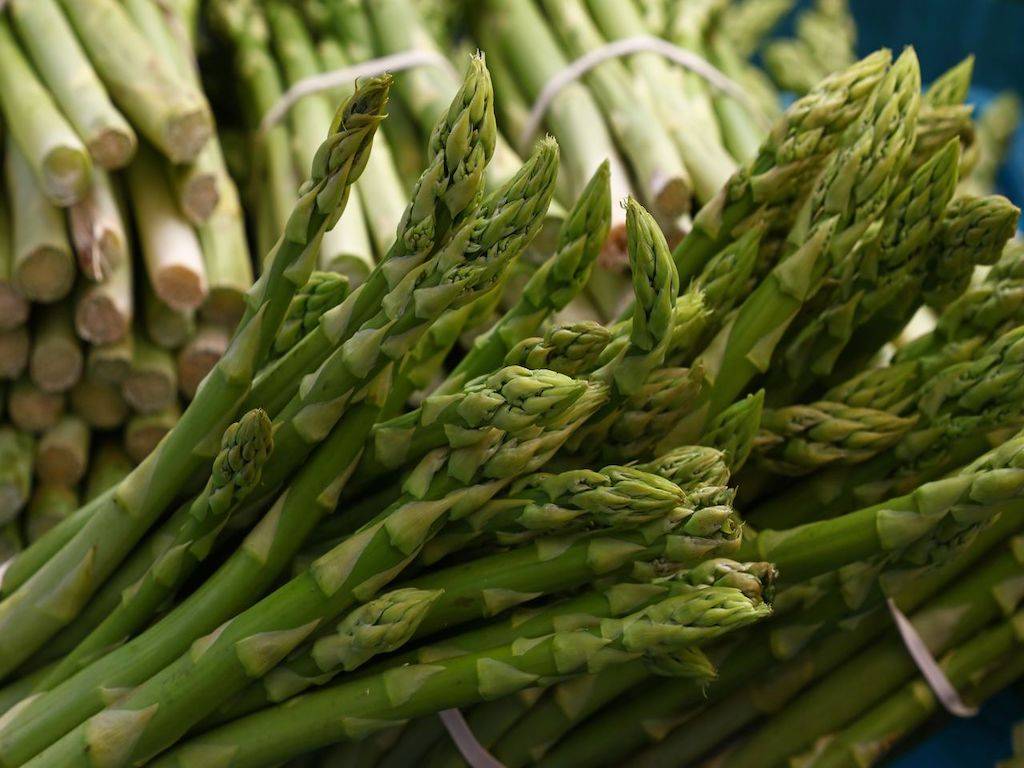
The asparagus plant is a perennial herbaceous plant that grows to a height of 100 to 150 cm, with stout stems and feathery leaves. Asparagus is a member of the Asparagaceae family and the genus Asparagus. Asparagus is a vegetable as well as a medicine. This vegetable can be grown in India's tropical and subtropical regions. Asparagus roots are typically gray in color and tuberous. Basically, the Asparagus Plant is native to Europe's western coasts. When it comes to India, this vegetable can be found all over the country.
Just young asparagus shoots are widely consumed and used in a variety of dishes all over the world. Purple asparagus differs from its green and white varieties in that it has a high sugar content and a low fiber content.
Guide to Asparagus Cultivation
Below we have mentioned step by step method of growing Asparagus;
Climatic Conditions:
Approximately until 1300 meters, asparagus can be successfully cultivated in subtropical and sub-temperate agro-climatic zones.
Soil Conditions:
Asparagus grows well in a variety of soils. However, it grows well in well-drained, organically rich soils with a pH of 6.5 to 7.5. Liming can be achieved if the soil is more acidic in nature. Try building raised beds if your soil is thick.
Varieties:
Non-hybrid and hybrid varieties are available in the region.
Propagation:
Crowns or seeds may be used to spread asparagus. Crowns of good quality can be chosen from a reputable nursery and transplanted in the area. It can, however, also be grown from seed. Seeds of a local high-yielding all-male hybrid variety should be chosen for sowing.
Preparation of Land and Planting:
Deep ploughing of 20 to 25 cm is recommended, followed by 2 to 3 harrowings after a few days. Make sure that all weeds from past crops are eliminated, and that the land is well leveled. Prepare 45 cm wide ridges for planting, leaving a 20 cm furrow gap as an irrigation channel.
Nursery Raising and Planting:
Seeds should be planted in raised beds in April at a spacing of 5 cm apart to allow the hard seed coat to rot before the monsoon comes. Germination begins 7 to 10 days after the first monsoon shower in June. Seedlings should be transplanted on ridges 60 x 60 cm apart and bamboo stakes should be given as part of the preparation.
The rhizomatous disk at the base of the aerial stem is separated for vegetative propagation. Around the aerial shoots, the rhizomatous disc forms many vegetative buds. The disc was broken into pieces with at least two buds and two to three tuberous roots in each. These fragments are planted with 1cm of soil around the buds, and lightly watered. Sprouting should begin within 8 to 10 days of planting.
Fencing:
Using stakes and garden twine to make a fence on either side of the row to protect the crop and keep top-growth from splitting and destroying the crowns in a windy environment.
Irrigation:
The amount of water needed depends on the soil type, environment, and season. Irrigation can be done after the monsoon has passed. In the winter, this crop needs 2 to 3 irrigations, and in the summer, it requires 2 irrigations per month. If there are heavy rains, make sure there is a strong drainage channel.
Weed Control:
Maintain weed-free asparagus beds by weeding by hand rather than using a hoe to avoid damaging the asparagus plants' shallow roots. During the rainy season, two to three weedings should be completed, with one weeding every two to three months after that.
Fertilizer Use:
If the plants are being grown for medical purposes, they can be grown without the use of artificial fertilizers or pesticides. Garden compost, well-decomposed organic manure, farm yard manure, vermi-compost, or green manure should be added to the planting area. Prepare biopesticides from Neem and cow urine, for example, to keep rodents and diseases at bay. Chemical fertilizer requirements for commercial crops can be obtained from the local horticulture department.
Pests and Disease Control:
The diseases and pests present in asparagus production include purple spot, rust, Fusarium Crown, Root and Lower Stem Rot, Phytophthora Crown, Root and Spear Rot, Beetle, Aphids, Cutworm, Armyworm, Rose Chafer, and Asparagus Miner. To recognise these pests, diseases, and control steps, contact any horticulture department.
Harvesting:
Harvesting can be stopped for the first two years after planting. Harvest spears for 6 weeks starting in mid-April in the third year. Harvesting can be done for 8 weeks starting in mid-April in subsequent years. Specific spears can be no more than 18cm long when sliced with a sharp knife below the soil. Harvest every two to three days in warm weather for the best spear production. In the winter, these plants can be harvested after 40 to 42 months. Plant roots can be dug out and peeled with a sharp knife as soon as possible after harvesting.
Yield:
The cultivar, soil type, and farm management activities all influence yield. It is possible to get a yield of 5 to 6 tonnes of dry roots on average. Asparagus sells for around rupees 800 per kilo.












